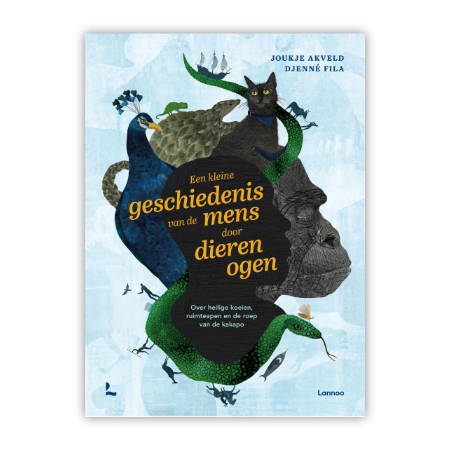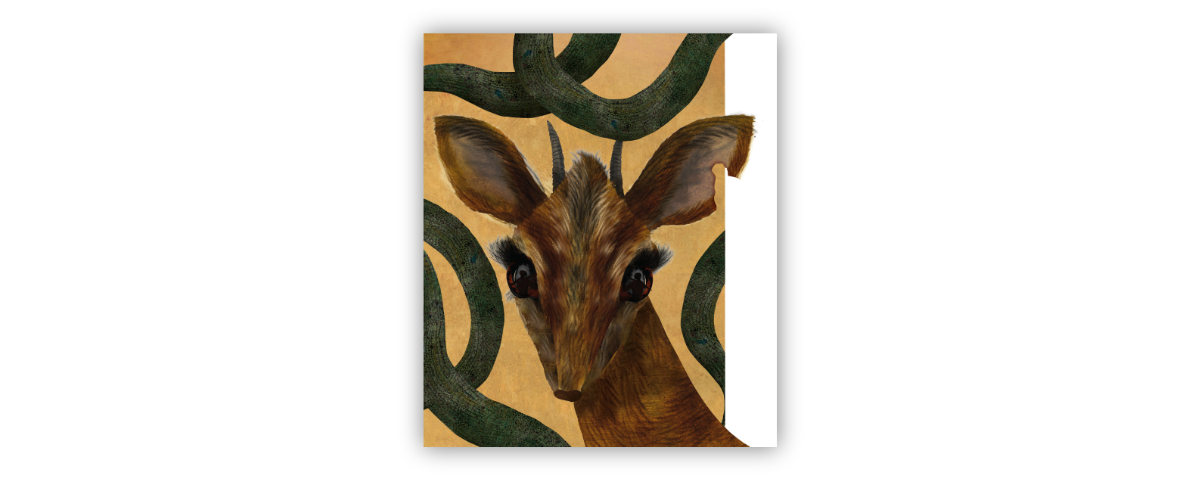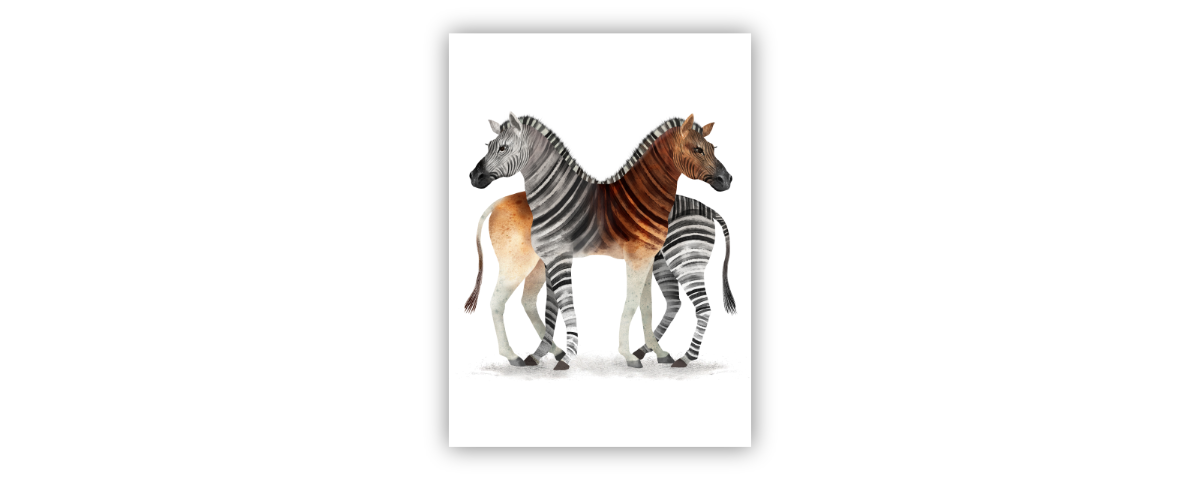A Small History of Humankind through the Eyes of Animals

Published by Lannoo, 2022
Rights sold to Kazakhstan, China
A richly illustrated and mind-expanding history of humankind as seen from the perspective of animals
‘A history of humankind without animals would be an incomplete history,’ writes Joukje Akveld. ‘That’s why this book is about them. And because we humans have already told our story often enough, it is the animals themselves who are doing the talking here.’ This original premise results in twenty-nine fascinating and colourful animal testimonies in words and pictures, which take the reader from the Botswana of 200,000 years ago to present-day South Africa.
Akveld has not invented anything here and supports every chapter with scientific information about the relationship between humans and animals. For example, you’ll read about ‘the animal as an object of study’ in ancient Greece (the peacock), ‘as a goldmine’ when whaling came along, and as ‘a rarity’, now that a sixth mass extinction is looming (the northern white rhinoceros).
The animal perspective also results in imaginative and sometimes amusing monologues and dialogues in which Akveld has cleverly given each animal its own appropriate narrative voice. For example, Fortune, the pug who belonged to Napoleon’s first wife, sounds rather prim when he talks about how ‘furieux’ he was when ‘madame’ allowed another man besides him into their bed. While the lion waiting beneath Rome’s Colosseum until he can hunt his prey feels thoroughly tormented and expresses himself in snappy sentences: ‘The crowd roars wildly. I roar too. For my lionesses. For my cubs. For the yellow grass that has gone for good. With one leap, I am with him. […] I hit, I pull, I tear. And I kill.’
All these voices, from the South African quagga to Botswana’s dikdik, resound powerfully in Fila’s beautifully evocative illustrations. Using a variety of colours and materials, she gives each account a distinctive atmosphere. The mountain gorilla, for example: his dejected appearance and the black scribbled pages look ominous, reinforcing the deep tragedy of the Rwandan genocide that killed a million Tutsis in 1994.
‘The people had gone insane,’ says the gorilla.
Yes, humans do not come out of this well. However, that does not diminish the huge pleasure of reading the text and looking at the pictures in this truly impressive book.
NRC
'Anyone who has looked in this mirror will no longer see the same world.'de Volkskrant
'When an inspired and erudite author meets an illustrator of the same calibre, something beautiful is created: a book that transcends age categories, a true gift for reading alone and for reading aloud.'Jury report Woutertje Pieterse Prize 2023


